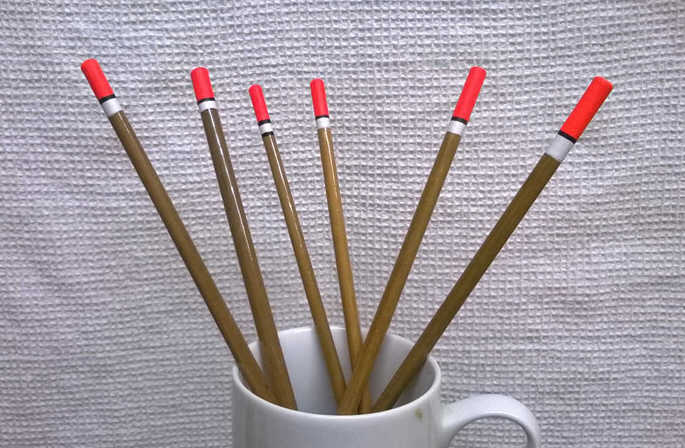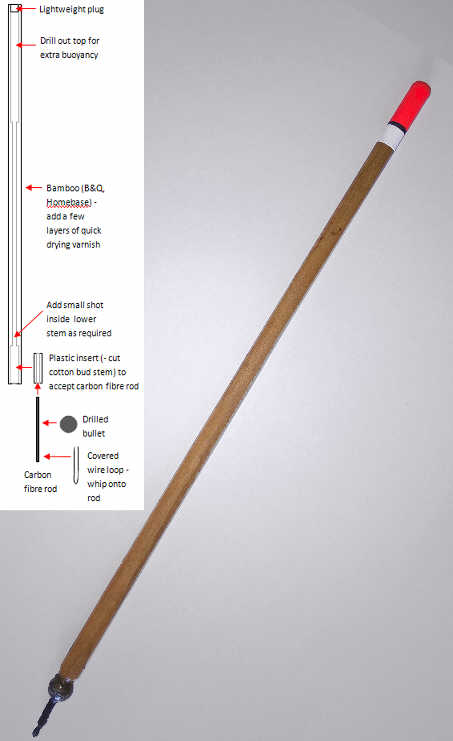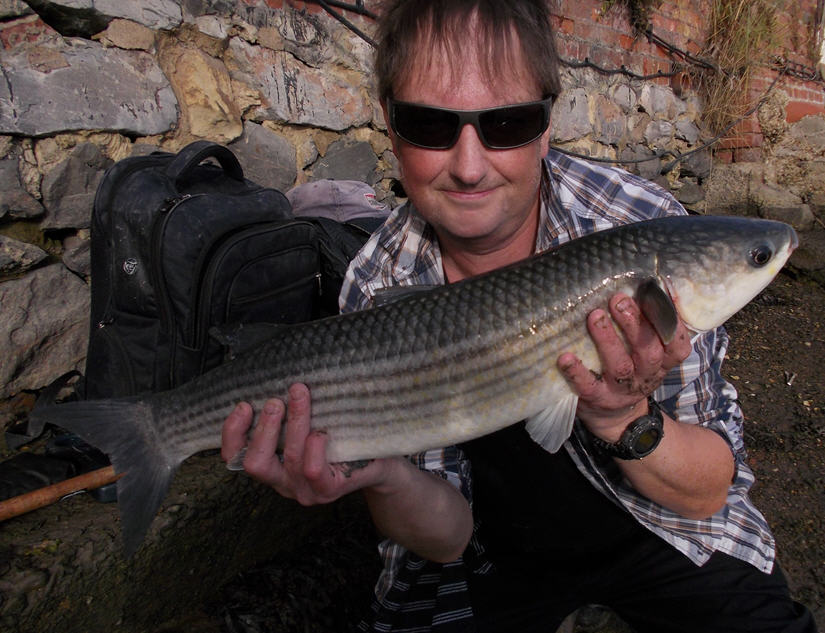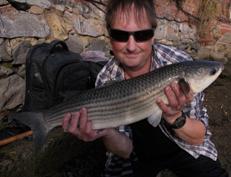Mullet Fishing: Custom Floats |
|
|
|
Not entirely content with some of the kit available over the counter, I can't resist the urge to tinker with stuff, in an attempt to make it 'work better'. Some of the augmentations I've introduced have a real practical worth, and some have been made, with the benefit of hindsight, for my own amusement. If I were to select the best and 'saddest', I would start with cheap, expendable and robust home made floats. A recurring problem is the breakage of floats, especially around pontoons and other obstacles, known to the enlightened as 'The Curse of Drennan'. Theirs are for the most part excellent floats to use - they cast well, sit well, have good balance, and... break incredibly easily. The part that usually breaks (or just falls out) is that with the weight (if any) and ring, and you will often watch helplessly as the other useful bit floats off down the river, or remains perfectly cocked in the exact place you wanted to cast, but with no line attached to it. There are two solutions: a) a drill out the stem at the base of the float, insert a short section of carbon fibre rod (cheap - 1mm, 1.5mm etc) and lash on a new eye, or
An update for 2018: this method applies equally to floats made from peacock quills and reeds - the balance, casting and weight-carrying properties of both of those are a significant improvement over the cane floats described here, although neither is nearly so robust.
An update for 2018: this method applies equally to floats made from peacock quills and reeds - the balance, casting and weight-carrying properties of both of those are a significant improvement over the cane floats described here, although neither is nearly so robust. |
|
|
|
The raw materials are as follows, all readily available from the 'net, if not locally:
The method, resulting in something like a conventional pre-loaded waggler: |
|
||
|
|
|
|
|
|
NB there may be a buoyancy difference in salt water vs. fresh, more noticeable with very fine float tips If all of that sounds complicated, it should not seem so after a few tryouts and some inevitable mistakes, plus a bit of cursing and throwing stuff... Anyway, what's the worse that can happen? .... and try to remember there are no prizes for super-gluing your finger to your eyeball... I used some of these floats for much of the 2014 and 2015 seasons for close / mid-range opportunities where obstacles were a factor (or not), and they survived all punishments, with just an occasional touch-up to the varnish and coloured tip.
And finally, the best bit - the photo pages from 2014 onwards include loads of mullet captured using one of the above floats, often visible in the photos of fish lying on the landing net; this one weighed in at 6/08: |
|
|
Last updated 20.09.23
|




